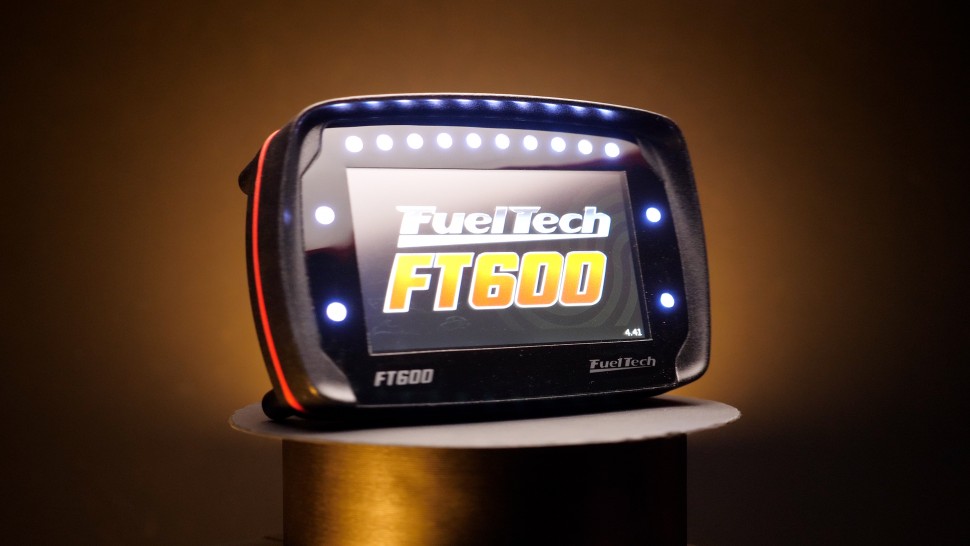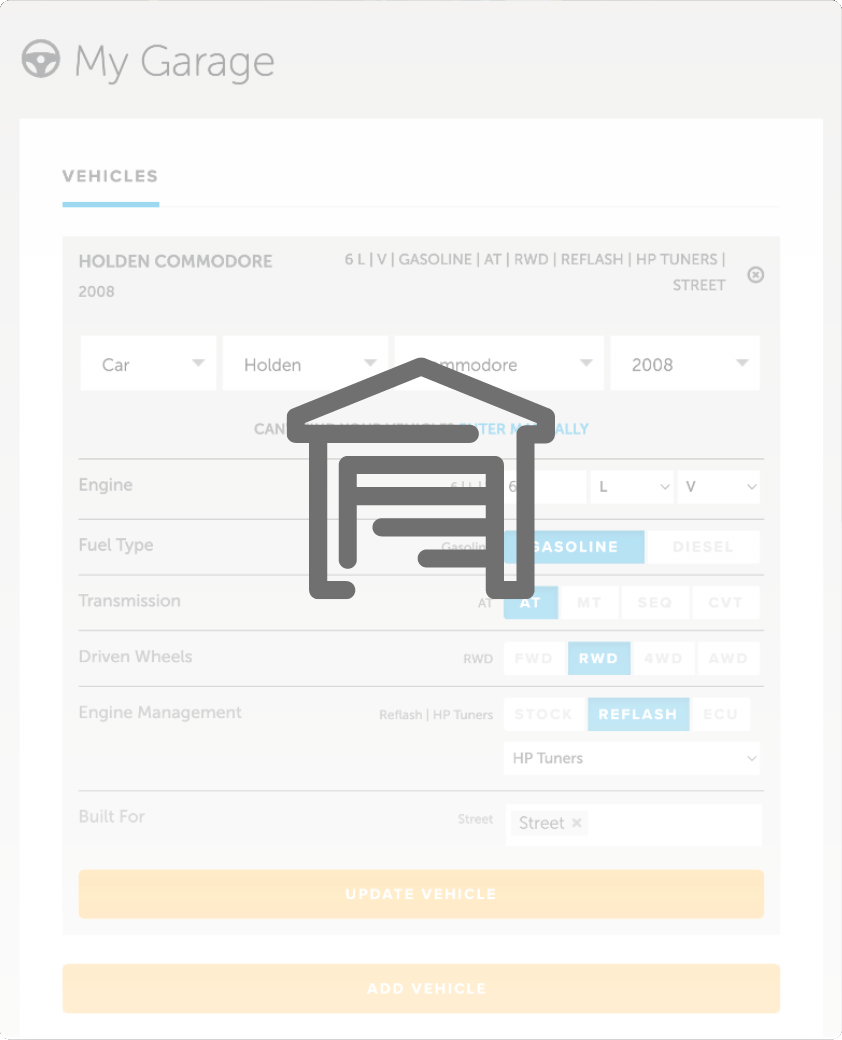| 00:00 |
In this module, we're going to run through the same list of limiting strategies employed by a vehicle's TCU in order to protect it, but this time viewing them through a more practical lens.
|
| 00:09 |
We'll start with what's probably the most crucial, general torque limits.
|
| 00:14 |
Before adjusting each torque limit, we should take note of the stock values.
|
| 00:19 |
If some values look oddly high, you may be seeing a strategy calibrators use to simplify things.
|
| 00:26 |
By maxing values out, or setting them high enough to avoid having an effect, OE calibrators will sometimes avoid a strategy having an impact.
|
| 00:35 |
If those limits aren't something you'd like to add to your project, you can ignore them.
|
| 00:40 |
For the limits that remain, it might be tempting to simply max them out so we never have to deal with them again, especially if it's likely the vehicle will be further and further modified as time goes on.
|
| 00:51 |
Since it's not a difficult thing to adjust though, let's keep an incremental approach so we can avoid situations where entering very large values has unwanted consequences.
|
| 01:01 |
For example, let's say the ECU comes set with a max torque value of 400 foot -pounds.
|
| 01:06 |
You think you'll make 500 today, may turbo the engine later, and don't ever want to think about this torque limit again.
|
| 01:13 |
So, you press the 9 key until the field is full, and now the limit is 99,999 foot -pounds.
|
| 01:20 |
In some cases, entering a value well beyond what the OE expected can cause software to write junk data into an adjacent and unrelated area of memory.
|
| 01:29 |
That adjacent area could, for example, control the second to first gear downshift, which could end poorly.
|
| 01:35 |
If we're set on throwing a big number in to be done with a limit, it pays to keep it within reason so we don't get ourselves into trouble with other functions.
|
| 01:43 |
For example, if you really want to bump a 400 foot-pound limit far away from the 500 you think you'll make, perhaps go to 800, not 8,000.
|
| 01:52 |
For those taking a more intentional approach, before increasing torque limits, I suggest looking them over to see if they even need to be adjusted.
|
| 02:01 |
I've seen many situations where someone maxed out torque limits and the stock values were already high enough that they would have had no impact anyway.
|
| 02:09 |
In that situation, my suggestion is don't make extra work for yourself.
|
| 02:14 |
You may also be removing a safety measure that's only going to step in if it needs to save your parts anyway.
|
| 02:21 |
In order to determine reasonable torque limits, hopefully we can find out exactly how much torque our transmission can handle.
|
| 02:29 |
You may find that information in product documentation, perhaps from the vendor if it's an aftermarket product, and then decide how close to that limit you want to allow the transmission to operate.
|
| 02:40 |
Then with that info, torque limits can be set accordingly.
|
| 02:44 |
If gathering that info isn't possible and the transmission is stock, one school of thought is there some measure of extra torque almost any transmission can handle without failure? Because OEMs don't usually build things right to the ragged edge of survival.
|
| 03:00 |
Based on that premise, limits can potentially be increased by a modest amount, such as 5 or 10 percent, without quickly inducing failure.
|
| 03:08 |
While this isn't science and there is risk involved, if you're unable to find information on how much torque an application can really handle, this is a path I've seen taken with some success.
|
| 03:18 |
If you decide to head down this road, look for torque limit values which aren't already maxed out in stock form, and then add a relatively small percentage to them.
|
| 03:26 |
To add 5 or 10 percent, generally you would multiply by 1.05 to create a 5 percent increase, or 1.1 for 10 percent increase, or whatever margin you're comfortable attempting.
|
| 03:37 |
While this isn't always safe, it's certainly less risky than maxing limits out and having no protection at all.
|
| 03:43 |
Pragmatically, before pushing any part beyond its potential limit, I suggest finding out what repair or replacement would cost.
|
| 03:52 |
With that info in hand, you can better decide how much risk you really want to take.
|
| 03:56 |
After that's been decided, I recommend making the limit increases in an iterative process.
|
| 04:02 |
For example, if you decide to push a 400 foot pound limit up as high as 600 foot pounds and have no idea if the components can handle that, consider raising the limit in increments.
|
| 04:14 |
After each increase of perhaps 50 foot pounds in that case, you can run the vehicle, data log it, see if anything is slipping excessively, see if the fluid temperature is rapidly increasing, and see if shifts are executing in a similar amount of time compared to before your last limit update.
|
| 04:32 |
That testing and review might help give a feel for whether the transmission is struggling or not.
|
| 04:36 |
By only going a little too far and then dropping the limit back down, if the log turns up concerning values or you hear or feel something isn't right, you reduce your risk compared to pushing the transmission way too far all at once.
|
| 04:50 |
Next, since torque limiting can come from the ECU side or the TCM side in most integrated applications, I like to know what each is going to do.
|
| 04:59 |
And I find the best way to do this is to set the ECU side to a low torque limit and see how it behaves.
|
| 05:06 |
Then raise it back up, set the TCM to allow a low torque limit, test and observe the different behavior.
|
| 05:14 |
This can also help correlate table changes with various data logging monitors.
|
| 05:19 |
Sometimes when you're choosing data log lists, the names don't give you a perfect picture of what system they relate to.
|
| 05:26 |
And by making deliberate torque reductions temporarily, you get to figure out what the monitors are for as well.
|
| 05:33 |
In many cases, one system may handle limiting in a way that's a lot more desirable than the other.
|
| 05:38 |
So, it's also good to figure this out early in your investigation, rather than finding out the behavior isn't desirable later in the field.
|
| 05:47 |
For example, if an engine and transmission can both handle 300 foot pounds of torque, you can leave the TCM torque limit at 300 foot pounds, set the ECU torque limit to 100 or 200 foot pounds, test and see what happens when the ECU limit is exceeded.
|
| 06:05 |
The actual torque value that makes sense to test with will vary with each application.
|
| 06:09 |
But I suggest testing with limits that fall below maximum engine output, but not low enough to stop you from driving.
|
| 06:16 |
After seeing how the ECU torque limit behaves, we can raise the ECU torque limit back up, drop the TCM limit down to the same reduced torque level that was chosen for the prior ECU side test, and test drive again.
|
| 06:30 |
This time we should get to see how the TCM handles things since the ECU limit has been raised back up.
|
| 06:36 |
When you compare the test results, sometimes behavior will be almost identical, while in others it will be rather different.
|
| 06:44 |
Some points of interest here.
|
| 06:45 |
Did torque intervention occur at the same torque level in both tests? A dyno comes in handy for that.
|
| 06:52 |
Was the torque output reduced to the same level during limiting in both tests? And was limiting stable or did torque oscillate or jump using one of the other methods? Did the limit seem to have a delay before it was activated? Did both limiters achieve torque reduction in the same way? For example, did one limit boost and the other shut the throttle? I always suggest taking care in this process because sometimes limits present in software don't necessarily function under the conditions we test.
|
| 07:23 |
For example, maybe you're altering a limit that's only used in a drive mode that you're not in.
|
| 07:29 |
Don't put yourself in a situation where you're testing a 200 foot pound limit by suddenly flooring a thousand foot pound vehicle.
|
| 07:37 |
By applying accelerator pedal input gradually, you can make sure limiting occurs without going far beyond the expected limit.
|
| 07:46 |
After reviewing test results, then you can decide which limiting behavior you like best.
|
| 07:51 |
Oftentimes we're in a situation where either the engine or drivetrain can handle more torque than the other.
|
| 07:58 |
For example, maybe the engine can handle 500 foot pounds, but the transmission can only handle 350 foot pounds.
|
| 08:05 |
Or maybe we've installed a built transmission capable of 800 foot pounds, but our engine can only handle 500.
|
| 08:12 |
If the engine can handle 500 foot pounds, we can set the ECU torque limit to 500.
|
| 08:18 |
Then if the transmission or rear end or axles can only handle 350 foot pounds of engine output, we can set the TCM to 350 foot pounds.
|
| 08:28 |
In this scenario, because the TCM torque limit is set much lower than the ECU torque limit, it should be the first one to activate.
|
| 08:36 |
In our testing, if we didn't like the TCM torque limit behavior and the ECU torque limit was much better, we may want to set the ECU torque limit to 350, TCM torque limit just a bit more, and let the ECU side logic protect the drivetrain without TCM intervention.
|
| 08:54 |
It all depends on the application, and that's why I suggest testing each module's limiting process to see what works best for you.
|
| 09:02 |
In some applications, all torque limit options are extremely intrusive and massively overreact.
|
| 09:08 |
They drop far more torque than is needed to avoid exceeding a limit, and sometimes delay torque ramping back up too.
|
| 09:15 |
In those situations, you can often make the vehicle faster and maintain safety by setting the engine up so it makes a little less torque to avoid the overreactive limiting behavior.
|
| 09:25 |
For example, if we have to take 10 foot pounds out of a tune to avoid hitting a limiter that pulls 150 foot pounds out when we floor it in fourth gear, that's a worthy trade.
|
| 09:35 |
With general torque limits covered, let's take another look at another common limit type, which is temperature-based.
|
| 09:41 |
Limits based on transmission fluid temperature are often based on actual sensor data, but be aware that sometimes monitored values aren't measured by sensors.
|
| 09:52 |
Sometimes they're instead inferred based on models created during OEM development process.
|
| 09:58 |
Temperature values being measured or estimated may impact how we choose to set up our limits.
|
| 10:04 |
In many cases, we'll be looking to move limits up to allow us to push further than we could stock, but when it comes to transmission fluid temperature limits, sometimes the stock limits are actually higher than prudent.
|
| 10:17 |
For example, OEMs often allow full power on a cold transmission because the average driver will not tolerate a car that doesn't respond with full power if they fire it up and floor it.
|
| 10:30 |
We know that's not ideal for the engine or the drivetrain, so perhaps we don't want to allow full power until the transmission warms up to a reasonable temperature.
|
| 10:39 |
On the hot side of things, OEMs often let transmission fluid go beyond the point where it's significantly breaking down.
|
| 10:46 |
Again, because uneducated operators would be furious if the car went into what felt like a limp mode, perhaps going up a steep hill.
|
| 10:54 |
Regardless of the protection it's providing and repair costs, it may be saving them.
|
| 11:00 |
Enthusiasts are often more understanding and accepting of limits in situations where there's a clear reason for them.
|
| 11:07 |
I'm just going to throw some numbers out to communicate the premise, but if the fluid starts to break down at 260 degrees Fahrenheit, perhaps limit torque from 260 degrees up instead of 290 up, where damage becomes really severe.
|
| 11:22 |
When I ask a car owner if it's okay to place limits that will protect their parts from damage, they're usually excited to hear that's possible.
|
| 11:29 |
That said, sometimes that conversation gets forgotten later, so be prepared to hear that the car went into limp mode someday, potentially combined with confusion as to why.
|
| 11:39 |
One situation where model temperature limits may need to be raised is after fitting an upgraded transmission cooler to a vehicle.
|
| 11:46 |
If the vehicle has temperature based protections and they're based on stock hardware, additional fluid cooling won't be accounted for.
|
| 11:54 |
Driving the vehicle aggressively, whether it be for sport or towing for example, will result in the TCM assuming fluid is getting hotter than your new cooler would allow.
|
| 12:03 |
With that in mind, perhaps look for your fluid temperature sensor in the factory service manual or physically on the transmission itself.
|
| 12:11 |
If it doesn't exist, then you know the temperature is modeled rather than actually being measured and you can proceed accordingly.
|
| 12:19 |
Other temperature based limiters you might find relate to the clutch and holding devices.
|
| 12:25 |
These are generally inferred or modeled values because monitoring the actual temperature of these parts is less financially viable in a mass production situation.
|
| 12:35 |
To determine how to infer these temperatures, the OE installs sensors on test pieces, collects a great deal of data, and then builds a model to generate inferred temperatures based on the data the TCM in the production vehicle will actually have available to it.
|
| 12:50 |
For example, during a slip event, data shows the clutch will heat up.
|
| 12:54 |
In fact, they can see how much it heats up based on how much slip occurred and how long the slip event lasted.
|
| 13:00 |
If transmission fluid gets hot, the clutch will also heat up and transmission fluid is something the vehicle will often have a sensor for.
|
| 13:08 |
But again, some transmissions won't have a transmission fluid temperature sensor.
|
| 13:13 |
This can mean we may find a situation where one inferred value is generated based on data that includes other inferred values.
|
| 13:22 |
And this does stack up the for the data to be further from reality.
|
| 13:27 |
On the positive side, if engine torque is high during a shift, more heat will likely be put into the clutch while it's trying to lock up and torque is a piece of data the TCM will have available to it.
|
| 13:39 |
Again, without sensors on certain parts in the production car, the OE can't know the exact clutch temperature in your vehicle at a given moment, but they can estimate it with relative accuracy.
|
| 13:49 |
And based on that, they can put component protection strategies in place.
|
| 13:54 |
An example of a situation where we may want to increase a clutch temperature related limit is after replacing a clutch with a unit that can handle far more heat than stock.
|
| 14:05 |
In that case, you could raise clutch temp -based limits to prevent torque reductions until a higher inferred clutch temperature is reached.
|
| 14:13 |
Much like our transmission temperature limit example, there are situations where we may want extra clutch protection instead.
|
| 14:20 |
Maybe we're setting up fleet vehicles like the snow plow truck example I touched on in the previous module, and it would be better to limit things for a moment and let them cool, then smoke a clutch and take the vehicle out of service.
|
| 14:33 |
This comes back to considering the application and usage in addition to the components themselves.
|
| 14:39 |
In a drag race application, we may be happy to replace parts between rounds in exchange for a small advantage on track, meaning we may want to let damage occur in order to get as far down the track as possible before things let go.
|
| 14:53 |
But in situations where avoiding unwanted repairs is most important, optimal limit settings can be quite different.
|
| 15:02 |
Along those lines, some systems allow us to tune the desired amount of clutch slip and the safety responses to excess slip.
|
| 15:10 |
In a race application, we may want to allow a bit more slip before limiting torque, but there still comes a point where slip gets extreme enough that you're going to accelerate faster by reducing torque, letting the clutch lock back up, then resume full torque operation.
|
| 15:26 |
In an endurance race, saving the clutch to complete the event becomes critical.
|
| 15:32 |
This is a great example of a situation where removing limits isn't the best option.
|
| 15:37 |
How much slip a clutch pack can take before transferring friction material to the steels and potentially making the clutch inoperable will depend on a number of factors, including clutch material, plate thickness, transmission fluid temperature, and type, etc.
|
| 15:53 |
So, before deciding to allow more slip than stock before intervention in the form of a torque reduction occurs, really think it over.
|
| 16:01 |
It's always a good idea to talk to the clutch supplier or transmission builder and see what they suggest for a particular application and components.
|
| 16:09 |
In general, clutch slip protection measures are best left alone in a reflash situation or set conservatively in a standalone situation where you have to create your own values.
|
| 16:22 |
Excessive slip in the torque converter generates a lot of heat rather quickly and can cause damage, so any torque converter slip safety measures should also be altered with caution.
|
| 16:32 |
Another type of limiter we may encounter is related to max vehicle speed.
|
| 16:36 |
We talked about checking tires for their speed rating, and now let's talk driveshaft critical speed.
|
| 16:42 |
Aftermarket units with public ratings make things clear, but if we have a stock part, we need to be careful increasing speed limits unless we're sure the driveshafts can handle more than the factory speed limit.
|
| 16:55 |
Driveshaft failures can be catastrophic, including potential intrusion into the cabin or causing a serious crash.
|
| 17:02 |
Aftermarket providers can generally list the critical speed of each shaft they produce, which we can then work back to a max safe vehicle speed.
|
| 17:10 |
I suggest setting the vehicle speed limit to have a safety margin below the critical speed of any components rather than driving right up to the limit and putting the driver and occupants at higher risk.
|
| 17:21 |
Keep in mind that gearing and tire size changes the vehicle speed we can achieve at a given driveshaft speed.
|
| 17:27 |
For example, if the driveshaft is the limiting factor on a vehicle and we put a shorter rear gear in, our vehicle speed limit has to reduce accordingly or the driveshaft speed limit will be exceeded.
|
| 17:41 |
Let's say the critical shaft speed of the driveshaft is 5,000 rpm and you have a 29 inch tire, 323 gear, and the speed limit is set to 125 miles per hour and the vehicle speed to hit the critical shaft speed is 133 miles per hour.
|
| 17:57 |
We have a decent safety margin there of 8 miles per hour, but what if we install a 411 rear gear instead? Now, we can hit that 5,000 rpm shaft speed at under 105 miles per hour and the 125 mile per hour speed limiter is far too high for safety.
|
| 18:15 |
Installing shorter tires would have a similar effect to a shorter rear gear ratio.
|
| 18:20 |
Both shorten gearing and reduce the max safe vehicle speed for a given driveshaft speed.
|
| 18:27 |
Installing taller tires or a longer gear ratio has the opposite effect, allowing the vehicle to achieve higher speed before the driveshaft reaches its critical speed.
|
| 18:38 |
A change that shifts the driveshaft out of danger may then make another component the weakest link.
|
| 18:44 |
Perhaps then the tires become the lowest speed rated item in the whole system, so it's important to keep all the components in mind.
|
| 18:53 |
Moving on, let's discuss brake torque and park neutral limits.
|
| 18:56 |
As we touched on earlier, the brake torque limit is designed to limit torque applied while the driver is holding the brakes and oppressing the accelerator pedal.
|
| 19:05 |
From a performance perspective, this isn't ideal.
|
| 19:08 |
We'll likely want to increase the torque allowed during brake torque conditions if we ever want to take off more aggressively from a stop.
|
| 19:16 |
Keep in mind that once we increase the allowed torque, wear and tear can increase.
|
| 19:21 |
So, perhaps use the extra torque, but don't hold the vehicle stalled up on the converter for more than a few seconds at a time, and then allow a decent cooldown period between brake torque events.
|
| 19:32 |
This is another case where the OE control logic is designed to account for drivers who often don't have an understanding of the damage they can cause, but if the driver is aware and conscientious, there's an opportunity to improve performance and retain reasonable reliability.
|
| 19:51 |
Depending on the system logic, brake torque related changes may also impact left foot braking.
|
| 19:59 |
Left foot braking is a key technique used while driving in a road race, rally, or off-road condition.
|
| 20:06 |
So, you may want to increase brake torque limits not just for launching, but for driving conditions as well.
|
| 20:14 |
Moving on, the last set of limits to discuss are transmission line pressure and clutch pressure limits.
|
| 20:20 |
Pressurized fluid supplied to the clutch control piston comes from the line pressure circuit.
|
| 20:25 |
So, if we increase our clutch pressure limit to a value equal to or higher than line pressure, and increase the clutch pressure target that high as well, we may not see a clutch pressure increase if line pressure is not also increased to a level higher than desired clutch pressure.
|
| 20:44 |
Fluids flow from high to low pressure, so to apply more fluid pressure to a clutch piston, you still need to make sure line pressure is higher than desired clutch pressure.
|
| 20:56 |
When increasing these pressure targets and limits, keep in mind there are physical limitations to components.
|
| 21:02 |
Seals may fail under extreme pressure, the fluid pump can only generate so much pressure, and relief valves may open to prevent pressure from reaching the level you're hoping for.
|
| 21:14 |
Modest pressure increases are often possible, and a little extra pressure does support additional clamping force, which can avoid clutch and brake band slip.
|
| 21:25 |
To go further, physical changes like high pressure seals or higher pressure relief valves may be required.
|
| 21:32 |
As with most things, if we find out what the components can handle from a reliable source, it removes guesswork and gets us to our goals more quickly.
|
| 21:40 |
If that information isn't readily available or trustworthy, we can take a careful incremental approach, attempting small percent increases in pressure limits and targets, while monitoring to see if the system responds well.
|
| 21:54 |
If we increase pressure limits and pressure targets correctly, and get no increase in pressure, we may have exceeded the physical limitations of the parts, or encountered a limit not currently exposed in the tuning software if you're working with a reflash-based solution.
|
| 22:10 |
As a general rule, I suggest setting pressure limits and targets to values that you find are achievable based on testing and data logging to see what the system can really produce, rather than leaving the system requesting unachievable results.
|
| 22:25 |
This is important as a safety measure, and also avoids situations where the transmission control module detects something is wrong because targets aren't being achieved.
|
| 22:37 |
Monitored values being under targets can lead to check engine codes, overworking components, and in some cases, unwanted torque reductions.
|
| 22:47 |
Keep in mind, any situation where the TCM determines things aren't going to plan may result in activation of a control strategy designed to intervene when something is wrong.
|
| 22:58 |
With all that covered, let's quickly recap this module before finishing up this section of the course.
|
| 23:04 |
Limits come in all sorts.
|
| 23:06 |
Some are related to torque, some temperature, speed, or pressure.
|
| 23:10 |
Some are based on data from physical sensors installed in the vehicle, and some are based on inferred values from models the OE developed during their own testing using sensors that are not installed in production vehicles.
|
| 23:25 |
Torque-based limits are one of many functions that rely on TCM-ECM integration and honesty in reporting.
|
| 23:33 |
Knowing the limits of our components is ideal.
|
| 23:38 |
Limit increases without that knowledge are at your own risk and should be performed in a careful, incremental fashion.
|
| 23:45 |
Thoughtful adjustment reduces but cannot eliminate the risk of component damage or failure.
|
| 23:52 |
Some limits may need to be increased.
|
| 23:55 |
Others can be left alone.
|
| 23:57 |
And some should not be forgotten when changing final drive ratios or tire diameter.
|





